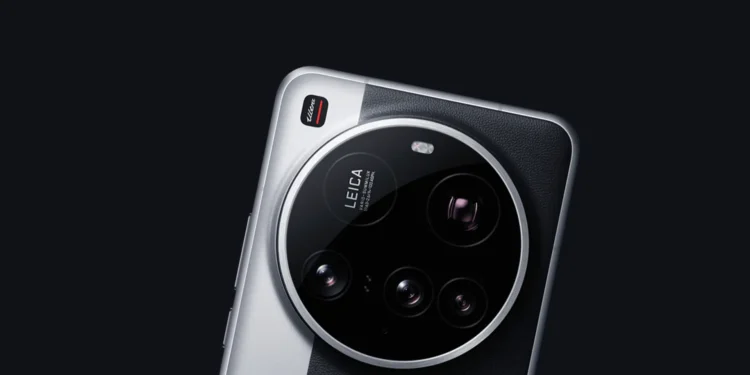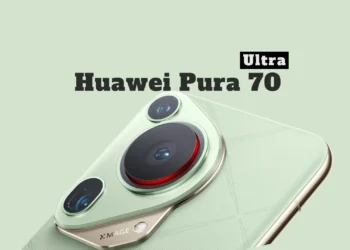Xiaomi 15 Ultra isn’t just another smartphone—it’s a revolution in mobile photography. By merging Xiaomi’s state-of-the-art technology with Leica’s legendary camera expertise, this device introduces a sophisticated four-camera system that redefines imaging on a mobile platform. We’ll go behind the scenes to explore how each meticulously engineered lens elevates your photography experience to unprecedented heights.
Leica’s Legacy: Precision Meets Artistry
Leica has been around since 1914 and is known for making the best optical stuff. They were the first to make a 35mm film camera and lenses that are super sharp, colorful, and have a simple design. Leica believes in focusing on the important things and making sure that technology and art work together. Xiaomi, their biggest competitor, has taken this idea and put it into their flagship phone.
Xiaomi’s journey from budget-friendly disruptor to premium tech leader has been marked by bold camera advancements. The Mi 11 Ultra’s 1/1.12-inch sensor and the 13 Ultra’s variable aperture hinted at their ambitions. With the 15 Ultra, Xiaomi leverages Leica’s century-old expertise to push boundaries further, blending computational photography with analog-inspired optics.
Xiaomi 15 Ultra Detailed Camera Module Breakdown
1. Leica 14mm Ultra-Wide Camera
- Specs: 50MP sensor, ƒ/2.2 aperture, 6P lens, Electronic Image Stabilization (EIS).
- Technical Analysis:
The 14mm lens (equivalent to 14mm in full-frame terms) offers a 122° field of view, ideal for sweeping landscapes and architectural shots. The ƒ/2.2 aperture, paired with pixel-binning for larger 1.4μm effective pixels, ensures brighter low-light captures. EIS minimizes motion blur, critical for handheld ultra-wide video.- Key Innovation: Distortion correction algorithms inherited from Leica’s M-series lenses combat edge warping without sacrificing detail.
2. Leica 23mm HDR Main Camera
- Specs: 50MP Sony LYT-900 (1-inch sensor), ƒ/1.63 aperture, 3.2μm Super Pixel, 8P lens, OIS, 5cm super macro.
- Technical Analysis:
Sony’s LYT-900 sensor—a successor to the IMX989—boasts 30% better dynamic range, enabling 14-bit RAW capture. The ƒ/1.63 aperture (larger than the iPhone 15 Pro Max’s ƒ/1.78) and 3.2μm merged pixels excel in low light, while OIS ensures sharpness. The 5cm macro capability rivals dedicated macro lenses, capturing textures like skin pores or dew on petals.- Key Innovation: Dual Native ISO merges Leica’s color science with Xiaomi’s HDR algorithms for lifelike highlights and shadows.
3. Leica 70mm Floating Telephoto
- Specs: 50MP sensor, ƒ/1.8 aperture, 6P lens, OIS, 10cm macro.
- Technical Analysis:
The 70mm focal length (3x optical zoom) is optimized for portraits, offering natural compression without distortion. A floating lens mechanism adjusts focus distance dynamically, enabling both 10cm macro shots and crisp distant subjects. The ƒ/1.8 aperture defies telephoto norms, allowing 60% more light than the Samsung S24 Ultra’s ƒ/2.4 telephoto.- Key Innovation: “Portrait Mode 3.0” uses depth mapping from Leica’s M11 rangefinder for bokeh that mimics Summilux lenses.
4. Leica 100mm Ultra-Telephoto
- Specs: 200MP sensor, 1/1.4” size, ƒ/2.6 aperture, 2.24μm Super Pixel, OIS.
- Technical Analysis:
The 100mm lens (5x optical zoom) leverages a 200MP sensor for lossless 10x hybrid zoom. The 1/1.4” sensor—unprecedented in telephoto modules—captures 40% more light than the Pixel 8 Pro’s telephoto. Pixel-shift technology merges 16 shots into a single 200MP image, ideal for high-resolution landscapes.- Key Innovation: Leica’s “Absolut Detail” algorithm sharpens edges without overprocessing, preserving natural textures.
| Module | Focal Length | Sensor | Aperture | Lens | Stabilization | Special Feature |
|---|---|---|---|---|---|---|
| Leica 14mm | 14mm | 50MP | ƒ/2.2 | 6P | EIS | Ultra-wide perspective |
| Leica 23mm | 23mm | 50MP + Sony LYT-900 | ƒ/1.63 | 8P | OIS (5cm super macro) | HDR & super macro capabilities |
| Leica 70mm | 70mm | 50MP | ƒ/1.8 | 6P | OIS | Floating telephoto & 10cm macro |
| Leica 100mm | 100mm | 200MP | ƒ/2.6 | — | OIS | Ultra telephoto high-res capture |
Real-World Applications:
- Low-Light: The 23mm module’s ƒ/1.63 aperture and 1-inch sensor dominate here, reducing noise by 2 stops compared to the Xiaomi 14 Ultra.
- Macro: The 70mm lens’ floating mechanism allows unique “portrait macros,” blending subject isolation with intricate detail.
- Zoom: The 100mm module’s 200MP sensor enables cropping at 10x zoom with minimal quality loss, outperforming the S24 Ultra’s 10x periscope.
Final Thoughts: Xiaomi 15 Ultra
The Xiaomi 15 Ultra isn’t just a phone; it’s a camera that combines the classic charm of Leica with the latest tech. Let’s take a closer look at its camera system and see what the future holds: bigger sensors, smarter stabilization, and optics that focus on artistry over just numbers. Whether you’re a photographer or a tech lover, the 15 Ultra is a game-changer, showing that smartphones can now compete with dedicated cameras.












Discussion about this post